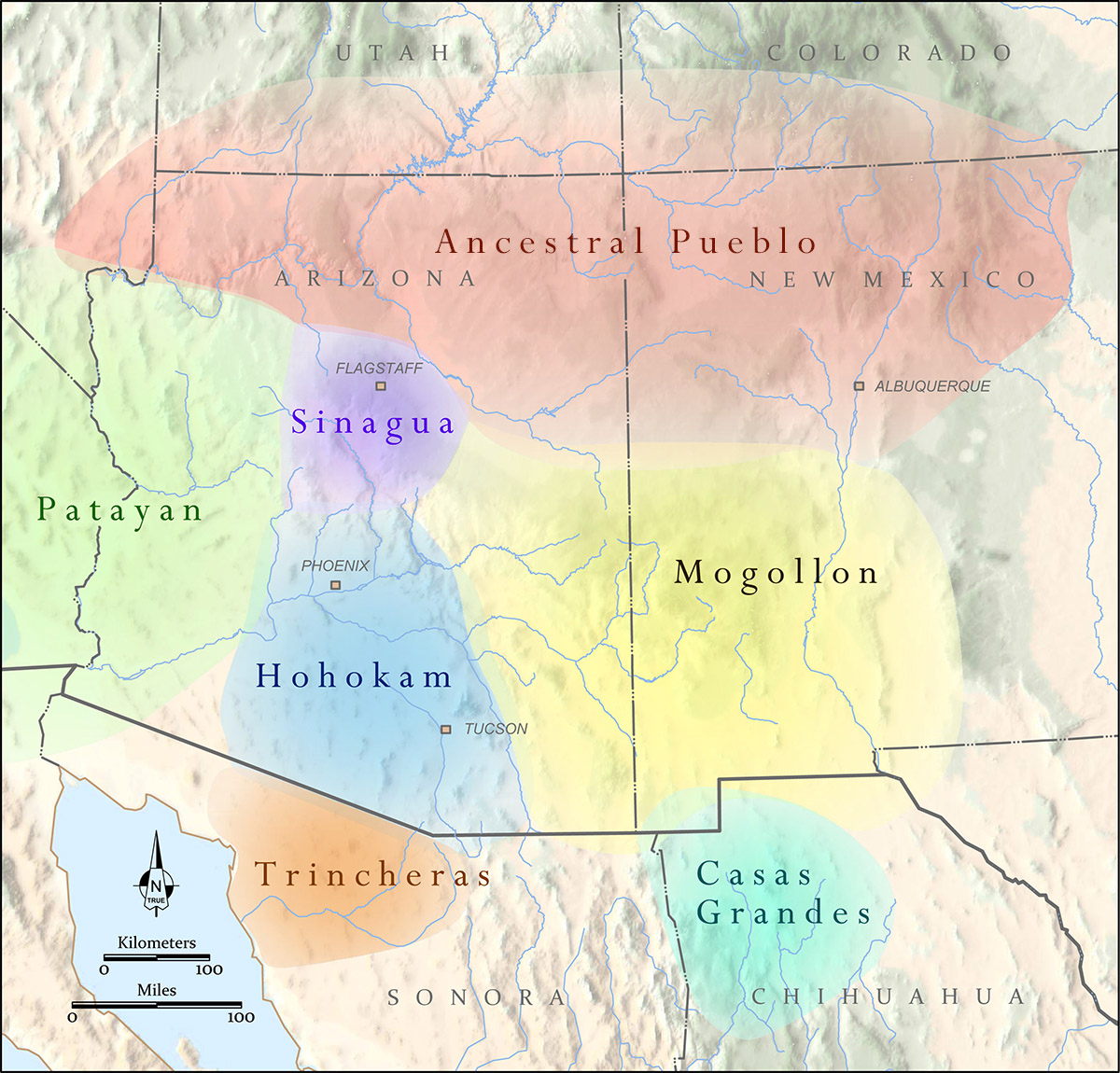I’m linking to this capture the map by Catherine Gilman of these pre-Hispanic cultural areas. I have not heard of Patayan or Trincheras cultures.
Aaron Wright, Preservation Archaeologist
[Aaron Wright is] also in the midst of applying for a series of grants to continue our research along the lower Gila River. These efforts are designed to expand our knowledge of the Patayan tradition, at least how it was expressed in southwest Arizona. Patayan is the least understood late prehispanic cultural tradition in the U.S. Southwest. Some may even claim that Patayan isn’t even a Southwestern archaeological tradition: don’t believe them! Granted, Patayan isn’t covered in our college courses on Southwest archaeology, but this is because little research has even been done on this aspect of the past.

Archaeological cultures of the Southwest. Map by Catherine Gilman. Courtesy of Desert Archaeology, Inc.
Along the lower Gila, Patayan is expressed in fabulous geoglyphs and extremely dense galleries of rock art adorning black volcanic cliffs and weathered granitic boulders. It is also found among the dozens of villages sites strategically placed to harness floodwater from the lower Gila in order to irrigate crops of corn, melons, gourds, and cotton. Yes, I’m talking about sedentary agricultural villages. Are we to believe that the rock art and geoglyphs were crafted by phantoms? The lower Gila contains some of the best-preserved, and most of the only extant Patayan villages. This is because damming and extensive agriculture have obliterated much of the Patayan signature from the valleys of the lower Colorado River, the epicenter of the Patayan World.
